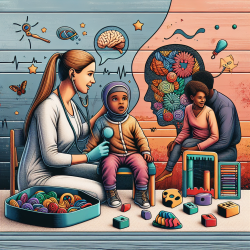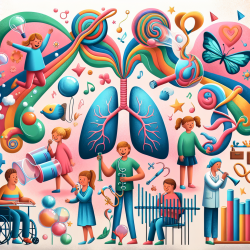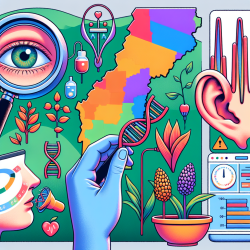As practitioners in the field of speech-language pathology, our commitment to improving outcomes for children necessitates staying abreast of the latest research and applying evidence-based practices. A recent case report, titled "Treatment of psychiatric comorbidities and interaction patterns in Coffin-Siris syndrome: A case report of a 4-year-old girl" by Jahnke-Majorkovits et al., provides invaluable insights into managing psychiatric comorbidities in children with Coffin-Siris Syndrome (CSS). This blog post will explore key findings from the study and discuss how practitioners can implement these insights to enhance therapeutic outcomes.
Understanding Coffin-Siris Syndrome
Coffin-Siris Syndrome is a rare genetic disorder characterized by developmental delays, intellectual disabilities, and distinctive facial features. Often, children with CSS present with psychiatric comorbidities such as Attention-Deficit Hyperactivity Disorder (ADHD) and Autism Spectrum Disorder (ASD). The complexity of CSS necessitates a comprehensive and individualized approach to therapy.
Key Findings from the Case Report
The case report by Jahnke-Majorkovits et al. highlights several important aspects of managing psychiatric comorbidities in a young girl with CSS:
- Holistic Management: The study emphasizes the importance of a holistic approach that considers not only the child’s medical and psychological needs but also family dynamics and interaction patterns.
- Therapeutic Interventions: The report outlines specific therapeutic interventions tailored to address the unique challenges faced by children with CSS, including behavioral therapies and family counseling.
- Family Interaction Patterns: Understanding and addressing family interaction patterns is crucial for effective intervention. The study suggests that improving family communication and dynamics can significantly enhance the child’s overall functionality.
Implementing the Research Findings
Practitioners can leverage the insights from this case report to improve their therapeutic approaches for children with CSS:
1. Adopting a Holistic Approach
Effective management of CSS requires a multidisciplinary approach that includes medical, psychological, and social support. Practitioners should collaborate with other healthcare professionals to create a comprehensive care plan that addresses all aspects of the child's development.
2. Tailoring Therapeutic Interventions
Given the diverse needs of children with CSS, it is essential to customize therapeutic interventions. Behavioral therapies such as Applied Behavior Analysis (ABA) can be effective in managing symptoms of ADHD and ASD. Additionally, speech-language therapy should focus on enhancing communication skills and addressing any language delays.
3. Engaging the Family
Family involvement is critical in the therapeutic process. Practitioners should work closely with families to understand their interaction patterns and provide guidance on improving communication and support within the home. Family counseling sessions can help address any underlying issues and foster a more supportive environment for the child.
4. Continuous Monitoring and Adjustment
Therapeutic interventions should be continuously monitored and adjusted based on the child's progress. Regular assessments and feedback from the family can help practitioners make informed decisions and modify the care plan as needed.
Encouraging Further Research
While the case report provides valuable insights, it also highlights the need for further research into the management of CSS. Practitioners are encouraged to stay informed about new studies and emerging therapies that could benefit children with this condition. By contributing to research efforts and sharing clinical experiences, practitioners can help advance the field and improve outcomes for children with CSS.
To read the original research paper, please follow this link: Treatment of psychiatric comorbidities and interaction patterns in Coffin-Siris syndrome: A case report of a 4-year-old girl.










